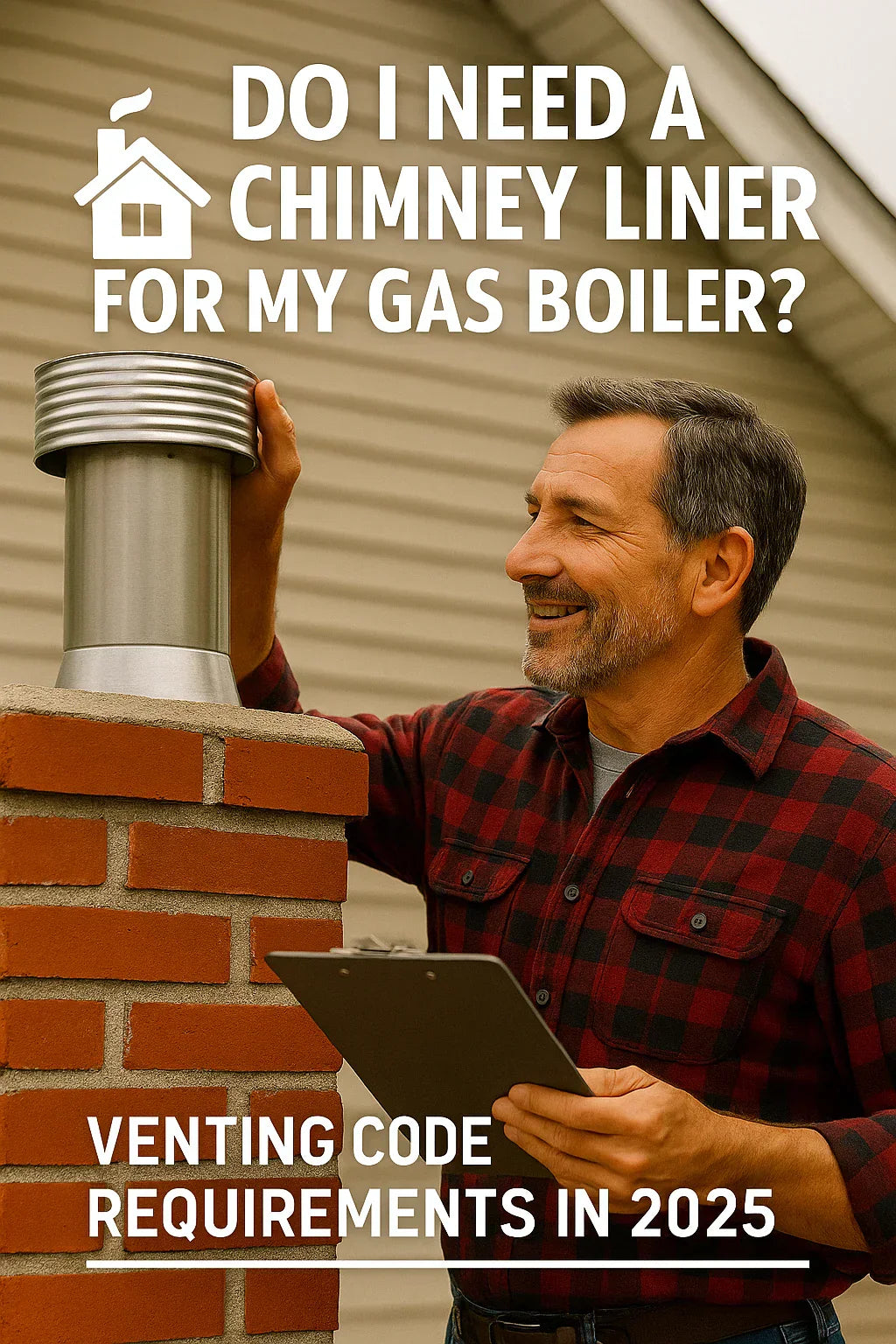If you’re installing a boiler like the Weil-McLain CGA-4 Series 3, one critical but often overlooked detail is your chimney liner. Mike Sanders—a smart, safety-conscious homeowner—knows that skipping this can cost you big in efficiency, compliance, or even safety. So, do you need a liner in 2025?
Let’s break down when liners are required, how they work, what they cost, and how they impact the performance of gas boilers like the CGA-4.
🔥 1. What Is a Chimney Liner and Why Does It Matter?
A chimney liner is a protective layer inside your chimney that helps safely vent combustion gases from your boiler. It improves:
-
Heat transfer: Keeps exhaust warm enough to rise safely
-
Draft performance: Ensures flue gases flow properly
-
Condensation control: Prevents moisture buildup from acidic flue gas
-
Fire protection: Isolates heat and flames from surrounding masonry
➡️ Without a liner, carbon monoxide or moisture can leak into your home or chimney structure.
🧱 2. When a Chimney Liner Is Required (2025 Code Updates)
According to IRC (International Residential Code) and NFPA 211, liners are required when:
-
Converting from oil or coal to gas
-
Installing a new boiler into an unlined masonry chimney
-
Downsizing BTU output without resizing the flue
-
Installing a high-efficiency appliance (if not direct vented)
📌 For the Weil-McLain CGA-4:
-
It’s a Category I appliance (non-condensing, atmospheric vent)
-
If venting into a masonry chimney, you need a properly sized liner to prevent draft failure and flue gas cooling
IRC Code Reference – Section M1801
🛠️ 3. Types of Chimney Liners
| Type | Material | Cost (Installed) | Lifespan | Pros | Cons |
|---|---|---|---|---|---|
| Clay tile | Terracotta | $1,500–$3,000 | 30–50 years | Traditional, durable | Not ideal for gas appliances |
| Stainless steel | Flexible/rigid | $900–$2,500 | 15–30 years | Ideal for gas, easy retrofit | Can degrade in acidic exhaust |
| Aluminum | Lightweight | $600–$1,200 | 10–15 years | Budget-friendly | Not code-compliant in all areas |
➡️ Mike’s choice: Stainless steel liner is the best match for a CGA-4 installation in a masonry chimney.
📋 4. What Happens If You Skip the Liner?
-
❌ Code violations — May fail inspection or invalidate permits
-
❌ Backdrafting — Combustion gases spill back into the home
-
❌ Moisture and flue erosion — Condensate soaks brick, breaks mortar
-
❌ Reduced efficiency — Flue gases cool and stall in oversized chimneys
-
❌ Warranty issues — Manufacturer may void coverage without liner
➡️ Installing a liner is not just a formality—it’s required for safety and performance.
💸 5. Chimney Liner Costs in 2025
| Component | Typical Range |
| Stainless steel liner kit | $300–$800 |
| Pro installation | $700–$1,700 |
| Total project cost | $1,000–$2,500 |
| Inspection/permits | $100–$350 |
Regional Variance:
-
Higher in the Northeast or historic homes
-
Lower in Midwest or during full HVAC installs
➡️ Mike’s budget tip: bundle liner install with your boiler quote—HVAC pros often discount it.
🧰 6. How to Know If You Already Have a Liner
DIY Checks (Visual):
-
Look for a metal pipe or flue inside chimney throat
-
Remove cap from chimney top and inspect with flashlight
Professional Confirmation:
-
HVAC technician or chimney sweep uses camera inspection
-
Inspection cost: $150–$300
➡️ Don’t assume—many older homes have unlined or cracked flues.
📐 7. Sizing the Liner for a Weil-McLain CGA-4
-
The CGA-4 produces 100,000 BTU/hr
-
Minimum flue size: typically 5”–6” round stainless steel liner
-
Must match vent connector size per ANSI Z223.1 (National Fuel Gas Code)
➡️ Oversized liners cause draft failure. Undersized = backpressure.
🧠 8. Mike’s Final Checklist
-
Installing into masonry chimney? ✅ Get a stainless liner
-
Doing a fuel conversion? ✅ Code requires a liner
-
Flue size mismatch? ✅ Liner corrects draft path
-
Liner already there? ✅ Verify it's intact and gas-rated
-
Venting into B-vent or direct vent? ❌ Liner not required
✅ Conclusion: Do You Need a Liner?
Yes—if you’re venting a Weil-McLain CGA-4 into a masonry chimney, a properly sized stainless steel chimney liner is required in 2025.
It ensures:
-
Code compliance
-
Safe flue gas removal
-
Full boiler efficiency
-
Longer chimney life
For Mike Sanders and other savvy homeowners, this is a smart upgrade that protects both your family and your investment.
In the next topic we will know more about: Will a Weil-McLain CGA-4 Fit in My Utility Room? Clearance, Noise & Venting Considerations







